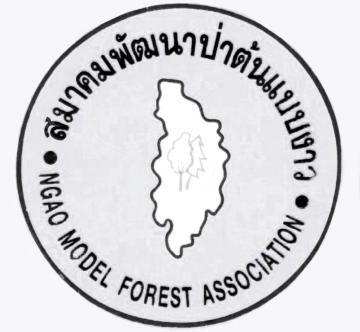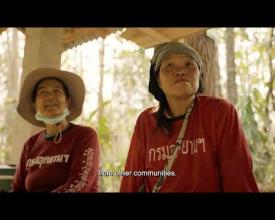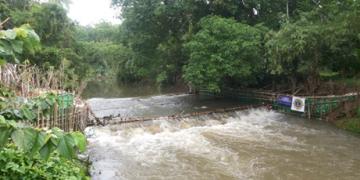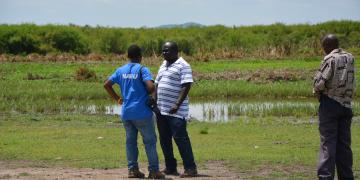
Women-led Fire Management in Ngao Model Forest
Ngao Model Forest in Lampang, Thailand, faces significant wildfire challenges due to agricultural burning, which affects the environment and local livelihoods. The community, led by a team of women in Ban Pong village, has successfully managed to keep the area fire-free for the past decade through regular patrols, awareness campaigns, and the use of modern technology. Their efforts have not only reduced wildfires but also expanded community forests, created economic opportunities, and empowered women in leadership roles. This initiative highlights the importance of community engagement and sustainable practices in addressing environmental issues while bringing social and economic benefits.
Contexte
Challenges addressed
Challenges of wildfire management in Ngao Model Forest, including frequent wildfires, post-fire erosion, and water scarcity. Social challenges involve engaging stakeholders and raising awareness, while economic challenges focus on stability and resource management. The women-led initiative addresses these by patrolling forests, building check dams, and using technology for communication. These efforts have improved fire control, community involvement, income from a healthier forest, and ecological balance.
Emplacement
Traiter
Summary of the process
The key success factors in the Ngao Model Forest fire management initiative are interconnected and complementary. The passionate leadership drives a shared vision for a thriving forest, fostering strong community relationships and teamwork. Regular awareness-raising sessions educate the community about fire prevention, enhancing their involvement and sense of responsibility. Building check dams not only prevents wildfires but also creates water reserves, supporting local agriculture and economic opportunities. The use of walkie-talkies for real-time communication and YouTube live broadcasts for transparency ensures efficient fire management and keeps the community informed and engaged. Together, these elements create a cohesive and effective strategy for wildfire management, leading to significant environmental, social, and economic benefits.
Building Blocks
Community Engagement and Leadership
Community Engagement and Leadership in Ngao Model Forest as driven by a passionate village leader who shares a vision for a thriving forest. The community formed a team of women who regularly patrol the forest and clear fire prevention paths. Equipped with walkie-talkies for real-time communication, they efficiently report fire conditions. The district authority supports them by broadcasting updates and progress on YouTube live daily, increasing transparency and community awareness. Regular awareness-raising campaigns educate the community about fire prevention, fostering a sense of responsibility and involvement. This approach has led to stronger community relationships, teamwork, and a significant reduction in wildfires, demonstrating the power of community engagement and women's leadership in environmental conservation.
Enabling factors
The enabling factors for Community Engagement and Leadership in Ngao Model Forest include being driven by a passionate leader who shares a vision for a thriving forest. This leadership fosters strong community relationships and teamwork, essential for effective wildfire management. Additionally, regular awareness-raising sessions are conducted to educate the community about fire prevention, ensuring that everyone is informed and engaged in protecting their environment. These factors collectively enhance the community's ability to manage wildfires and promote sustainable forest conservation.
Lesson learned
The lessons learned from the women-led fire management initiative in Ngao Model Forest include the significant involvement of the older generation, particularly retirees, who are among the most motivated and actively engaged in the fire watch team. Younger generations also show a strong interest in the fire watch team's work and are motivated to support their efforts. Additionally, awareness-raising campaigns on fire prevention have proven effective in helping the community understand the importance of fire prevention and have encouraged discussions about alternative livelihood opportunities. These lessons highlight the value of intergenerational engagement and continuous education in enhancing community resilience and wildfire management.
Systematic Fire Management and Technology Use
Systematic Fire Management and Technology Use in Ngao Model Forest as involving several key strategies. The community has built small check dams to save water, prevent wildfires, and reduce post-fire erosion. These dams also aid in vegetation growth and create fire breaks, contributing to a more resilient environment. The fire watch team uses walkie-talkies for real-time communication, enabling efficient reporting and response to fire conditions. Additionally, the district authority supports the initiative by broadcasting updates and progress on YouTube live daily, increasing transparency and community awareness. This combination of local knowledge and modern technology has significantly improved the efficiency of the community's fire management efforts, demonstrating the effectiveness of integrating traditional practices with contemporary tools.
Enabling factors
The enabling factors for Systematic Fire Management and Technology Use in Ngao Model Forest include building check dams to save water and prevent wildfires, using walkie-talkies for real-time communication, and expanding to YouTube live broadcasts to share activities with a wider audience. These strategies have enhanced the community's ability to manage wildfires efficiently, increased transparency, and fostered greater community involvement and awareness.
Lesson learned
The lessons learned from the women-led fire management initiative in Ngao Model Forest include the importance of having a strong understanding of the local landscape. This knowledge has enabled the village to build small check dams that not only prevent the spread of fires but also create water reserves, fostering new economic opportunities. Additionally, combining local knowledge with modern technology has significantly improved the efficiency of the community's response to fires, demonstrating the value of integrating traditional practices with contemporary tools.
Impacts
Social Impacts
- Stronger Community Involvement: The initiative has fostered a stronger sense of responsibility among community members to support fire prevention efforts.
- Increased Awareness: There is more awareness and acceptance of the importance of wildfire prevention within the community.
- Recognition: The vigilance of the women-led initiative in Ban Pong is recognized and appreciated by neighboring communities.
Economic Impacts
- Water Conservation: Building check dams has helped the community save water, which in turn has enabled the establishment of a local fishery using groundwater collected from the reserves.
- Higher Income: Locals can forage more produce from a healthier forest, leading to higher income.
- Economic Stability: Fewer wildfires contribute to better economic stability for the community.
Environmental Impacts
- Efficient Fire Control: A robust communication and response system allows the team to manage fires more efficiently.
- Vegetation Growth: Saving water during dry seasons helps reduce post-fire erosion, aids in vegetation growth, and creates fire breaks to reduce the risk of fires spreading.
- Ecological Balance: The initiative supports local wildlife, including snakes, rabbits, birds, squirrels, tree shrews, wild chickens, and wild boars, maintaining the ecological balance.
Beneficiaries
- Local Communities: The entire community enjoys a safer environment with fewer wildfires. The preserved water from check dams supports local fisheries, improving food security and nutrition. Increased awareness and participation in wildfire prevention have stre
Global Biodiversity Framework (GBF)
Sustainable Development Goals
Story
At the forefront of the battle against forest fires is Ms Rachaprapa Kamphud, village leader of Ban Pong community. When she’s not stationed at her post, she’s leading her team of women on forest patrols. It’s a taxing task into the unknown as they work in the dark, sometimes climbing up to four kilometres on foot to extinguish embers in the hilly landscape of Ngao.
Ms Rachaprada starts her patrols from the beginning of the dry season in February. For the next three months, she’s on call daily to respond to fires in her area – staying connected to her team through walkie-talkies. The team’s reputation for their vigilance is widely known as neighbouring villages frequently request their support to help put out fires in other provinces.
Her hard work doesn’t stop with the end of burning season. She spends the remainder of the year organising education sessions to teach locals about fire prevention and the importance maintaining firebreaks. She travels to other provinces to raise awareness and has received awards for her outstanding work to strengthen forest fire prevention in Ngao.
When asked what keeps her going, she tears up and looks to her team. In the last ten years, she’s seen the community reclaim their forest and take care of it to reap its riches. She says she feels a sense of pride in the ownership the community have taken in caring for their forest.
The echo of locals chatting and laughing is among the most vibrant sounds of Ban Pong community. Ms Rachaprada is often at the heart of the chatter, leading her women-strong team on another mission to protect their lifeline.









